



Opening Event: Saturday 13 October 2012, 1-4pm
co-hosted with The Festival of Mint – A Celebration of Local Growing – serving mint tea and mojito
Contact: info@furtherfield.org
DOWNLOAD PRESS RELEASE FOR PRINT HERE
+ See images of the exhibition on Flickr.
To be alive is to be wild. And we humans have a will that shapes the world with language, song, lust, labour and play. And for those of us who connect with it, a network of machines now extends our reach, amplifies our urges and quickens our exchanges.
The artists in this exhibition work and play with living organisms and technical things, systems and language, to explore how our relation to the natural world is changing. They introduce us to the unruly life going on in other natural webs of communication, knowledge and feral exchange. Gallery visitors (humans and dogs) are invited to view videos, interact with art installations and social media and undertake walks in the surrounding park with its other animals and edible plants.
Mary Flanagan travels overland and undersea in virtual worlds. Her journeys in the worlds are caught on video. Her avatar scouts the boundary lines of ‘heritage’ landscapes built by “residents”. Her walks are inspired by Thoreau, the great American writer and walker, who knew that ‘all good things are wild and free’.
![Aquitaine from the [borders] series by Mary Flanagan](http://www.furtherfield.org/wp-content/uploads/2012/08/borders-acquitaine-web.jpg)
Andy Deck calls attention to echoes of the wild in language. Despite the many entertaining digital visions of nature beamed to the flat screen, a wealth of intuitions relating to nature still survive in colorful expressions passed down for centuries. He invites you to help him build a bestiary of animal idioms using social media and a gallery installation.*
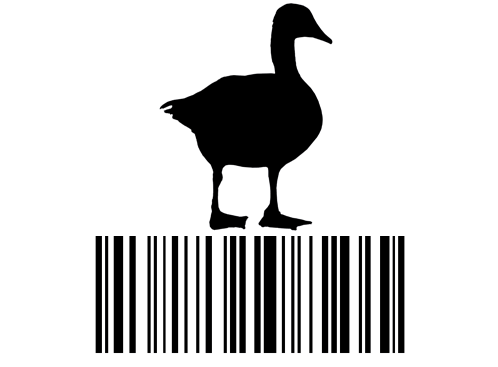
Sarah Waterson has invented a set of cartographic tools for dogs (and their human friends) to develop an interspecies psychogeography. Her electronic mapping system generates sniff data, routes and photographic journals supporting communication, collaboration and knowledge-sharing between companion species.
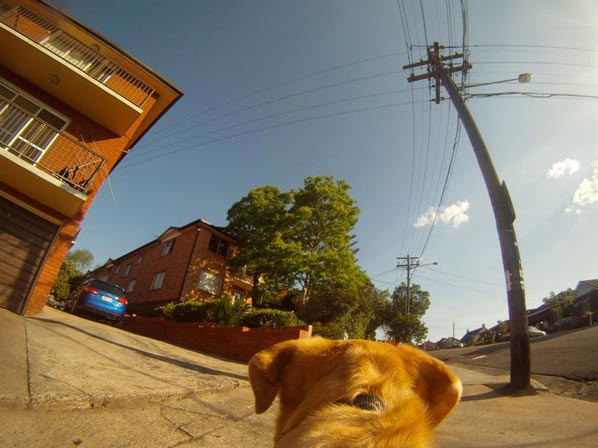
Helen Varley Jamieson and Paula Crutchlow dramatise the private actions and global consequences of our domestic lives in a long-running series of networked performances located in peoples’ homes. Dave’s Quiz (part 2) is an interactive extension of their provocation to discuss and appreciate relationships between personal, state and corporate responsibility around issues of consumption and disposal in late-capitalism.
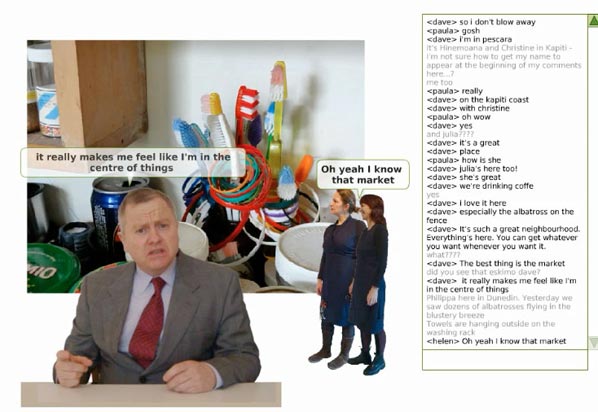
Artists duo Genetic Moo invite us to discover a dark, interactive sea of wiggling, luminescent creatures that gorge on torch light. They fantasize an evolutionary digression through the lens of human sensuality, drawing on images made by early scientists as they first found micro organisms or Animacules swarming in every sea, pond and pool of saliva.
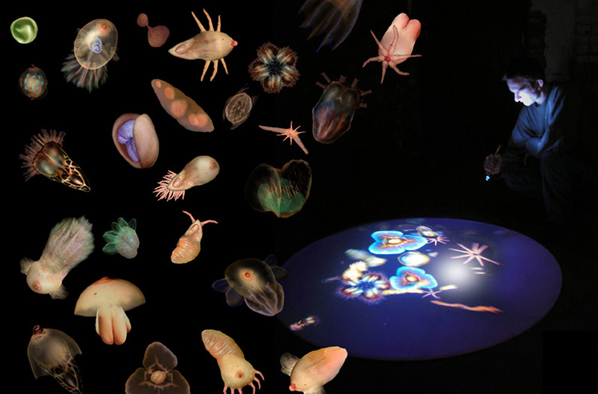
Disquieted by the environmental impact of constant technological upgrades, Dominic Smith works with open knowledge from the DIY mycology movement to create a system that combines the waste products from the tools and fuels of the contemporary coder. Out-of-date software manuals and coffee grounds are shredded to create a compost for fruiting oyster mushrooms to be harvested and consumed by visitors.**
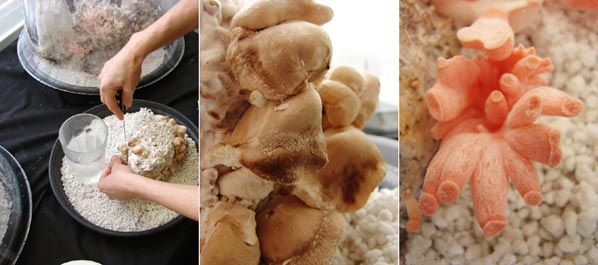
This exhibition is dedicated to Jay Griffiths, author of WILD: An Elemental Journey (2006).
* Crow_sourcing is a 2012 Commission of New Radio and Performing Arts, Inc. for its Turbulence website. It was made possible with funding from the Jerome Foundation. http://Turbulence.org/Works/crow_sourcing
** Dominic Smith developed this iteration of the shredder concept, originated by Julian Priest, David Merritt & Adam Hyde, as part of the geekosystem project. It is an experimental transposition of software development methods taking an organic, material form. It’s also worth noting that in his 1998 net art work Shredder 1.0 Mark Napier took the texts and images from pages of the WWW and jumbled them in colourful abstractions to reveal their ‘rawness’ once freed from the strict orthodoxies of web page design.
Crow_sourcing by Andy Deck
[borders] by Mary Flanagan
Animacules by Genetic Moo
make-shift: Dave’s quiz (part 2) by Helen Varley Jamieson & Paula Crutchlow
Shredder by Dominic Smith
Laika’s Dérive – The dogs de Tour by Sarah Waterson
Paula Crutchlow
Paula Crutchlow is a performance maker and director who co-authors live events across a variety of forms. As a co-founder and director of Blind Ditch she combines digital media and performance to engage audience and participants in distinct and active ways. Her work often uses a mix of score/script, improvisation and structured interaction to focus on boundaries between the public-private, and issues surrounding the construction of identity and the politics of place. Paula is currently the Creative Advisor for Adverse Camber directing work with some of the UK’s leading storytellers, she was an Associate Lecturer in Theatre at Dartington College of Arts, Devon 2001-10, and teaches Digital Performance Practice at the University of Plymouth.
Andy Deck
Andy Deck specializes in collaborative processes and electronic media. As a Net artist and software culture jammer, Deck combines code, text, and image, demonstrating patterns of participation and control that distinguish online presence and representation from previous artistic practices. In addition to numerous online exhibitions, his work has appeared in exhibitions like net_condition (ZKM), Unleashed Devices (Watermans Art Centre), and Animations (PS1-MoMA). He is also a co-founder of Transnational Temps, a media arts collective concerned with making Earth Art for the 21st Century.TM After showing in EcoMedia, a ground-breaking series of european exhibitions, Transnational Temps mounted the 2010 oil-related exhibition Spill>>Forward in New York. In 2011 Deck received first prize in the interactive division of the LÚMEN_EX Digital Art Awards. Deck’s work, currently shown by the Whitney Museum of American Art’s Artport and the Tate Online, has been commissioned by these and other prestigious institutions. Deck lives and works in New York City.
Mary Flanagan
Mary Flanagan is an artist focused on how people create and use technology. Her collection of over 20 major works range from game-inspired systems to computer viruses, embodied interfaces to interactive texts; these works are exhibited internationally at venues including the Laboral Art Center, The Whitney Museum of American Art, SIGGRAPH, Beall Center, The Banff Centre, The Moving Image Center, Steirischer Herbst, Ars Electronica, Artist’s Space, The Guggenheim Museum New York, Incheon Digital Arts Festival South Korea, Writing Machine Collective Hong Kong, Maryland Institute College of Art, and venues in Brazil, France, UK, Canada, Taiwan, New Zealand, and Australia. Her three books in English include Critical Play (2009) with MIT Press. Flanagan founded the Tiltfactor game research laboratory in 2003, where researchers create game interventions for social change.
Genetic Moo
Genetic Moo build living installations in pixels and light. The duo have been creating interactive art since 2008. Virtual creatures are constructed from choreographed video clips, combining elements of the human and the animal. They respond in a variety of life-like ways to audience motion, sound and touch and vary in size from the tiny Animacules to the all encompassing Mother. The works are driven using Open Source and Flash Software utilizing a variety of interactive interfaces. The programming behind the work is just complex enough to make the creatures appear more believable and create rich user driven narratives.
Schauerman and Pickup both gained Masters degrees from the Lansdown Centre of Electronic Arts. Their work has been exhibited extensively including the De La Warr Pavilion (2010); Watermans (2010) The Wellcome Collection (2011) and Glastonbury (2011). One of their works, Starfish, received a John Lansdown Award for Interactive Digital Art at Eurographics (2007) and was nominated for an Erotic Award (2012).
Helen Varley Jamieson
Helen Varley Jamieson is a writer, theatre practitioner and digital artist from New Zealand. In 2008 she completed a Master of Arts (research) at Queensland University of Technology (Australia) investigating her practice of cyberformance – live performance on the internet – which she has been developing for over a decade. She is a founding member of the globally-dispersed cyberformance troupe Avatar Body Collision, and the project manager of UpStage, an open source web-based platform for cyberformance. Using UpStage, she has co-curated online festivals involving artists and audiences around the world. Helen is also the “web queen” of the Magdalena Project, an international network of women in contemporary theatre.
Dominic Smith
Dominic Smith is an artist who engages with project hierarchy, ownership of ideas and heuristic curatorial strategies. Dominic is a founding member of ptechnic.org. He has exhibited and performed at Govett-Brewster Art Gallery in New Zealand, at the ICA in London, CCA Glasgow, AV Festival, Newcastle and Eyebeam NY. He has a doctorate with CRUMB at Sunderland University that examines the relationship between open source production methods, and art/curating methods. Dominic is also the current curator of thepixelpalace.org through which he also developed and runs basic.fm
Sarah Waterson
Sarah Waterson has practised as a new media artist for the past twenty years. Her works include electronic installations, collaborations with performers, video and audio work, generative and software based artworks, VR environments and data visualisations and ecologies. Interdisciplinary and collaborative practice informs the development and ultimately the design of these artworks. Her current interests include data mapping, data ecologies and cross species collaboration.
Sarah’s recent interactive installations have included: Laika’s Dérive (Performance Space, Carriageworks 2011), 33ºSouth (collaboration with Juan Francisco Salazar, Casula Powerhouse 2009), a custom made data mapping system that juxtaposes the cities of Sydney (Australia) and Santiago (Chile) trope, a e-literature project developed for the Second Life environment (SWF 08, ongoing), subscapePROOF (collaboration with Kate Richards, Australian Centre for the Moving Image, Melbourne), and subscapeBALTIC (ISEA2004, Helsinki, Finland). Sarah is a senior lecturer in interactive media at the School of Humanities and Communication Arts, University of Western Sydney, Australia.
Furtherfield Gallery
McKenzie Pavilion, Finsbury Park
London N4 2NQ
T: +44 (0)20 8802 2827
E: info@furtherfield.org
Furtherfield Gallery is supported by Haringey Council and Arts Council England